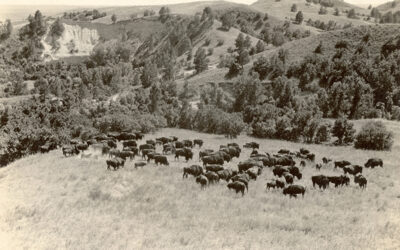In 1888 H. D. Watson, a Kearney booster during its boom days of the late 1880s, established the historic Watson Ranch. He had come West from Greenfield, Massachusetts, and purchased an interest in the holdings of G. W. Frank. When the two split up, Watson devoted his attention to the ranch, actually an aggregation of properties under his management. At one time it consisted of about eight thousand acres, reaching from the fertile Platte Valley on the south to rolling hills on the north and from downtown Kearney to a point five miles west.
During its existence, the ranching operations were devoted to grains, poultry, vegetables, and a 250-acre fruit orchard, primarily of cherry, plum, and apple trees. Watson loved trees and planted thousands of many varieties. Resembling a huge experiment station, the ranch included fields of wheat, rye, barley, corn, potatoes, sugar beets, squash, and asparagus.
In the 1890s during a drought Watson introduced alfalfa into the Platte Valley. He not only planted thousands of acres to alfalfa but encouraged other farmers to raise it because of its value as a forage crop and as a soil-building plant. It was not at first accepted, but as farmers began to experiment with alfalfa, they realized its value in maintaining soil fertility and supporting large-scale livestock production.
In part to demonstrate the value of alfalfa as a feed, Watson built up a dairy operation on his ranch. In 1900 he constructed a dairy barn 500 feet long, 100 feet wide, and 56 feet high. Often called “the biggest barn in the world,” it was attached to an immense silo and contained stanchions for more than 400 cows, huge hay lofts, and wagon and machinery storage.
The ranch was a nationally known showplace; prominent visitors toured the property and were entertained in the ranch house. However, despite its influence on agriculture and its public visibility, the ranch was not commercially successful. The core, about 4,400 acres, was purchased in 1917 by Woods Brothers of Lincoln and became known as the 1733 Ranch (because it was 1,733 miles from both Boston and San Francisco). The huge barn remained a landmark until it was torn down in 1935.



